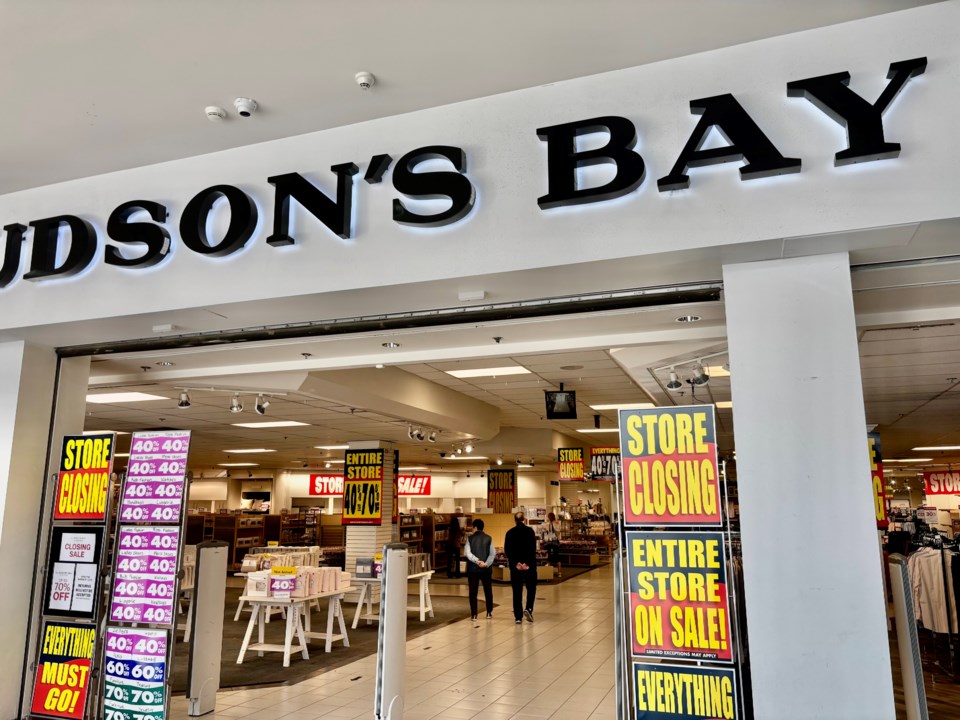As the fate of Hudson’s Bay Co. is decided in a liquidation process overseen by the courts, one retail expert says this moment was a long time coming.
HBC’s misfortunes are tied to the company’s failure to be “entrepreneurial” after suburban growth stalled, specialized competitors appeared, the store lost exclusive brands and online shopping emerged, says David Ian Gray.
The principal of Port Moody-based retail consultancy DIG360 Consulting Ltd. said that with the company’s real estate and other assets currently being auctioned, this moment could mark the end of The Bay as we know it.
Even if a bidder acquires the company’s intellectual property and preserves the HBC brand, its large department store format is obsolete and would require a major overhaul, Gray said.
“My guess would be that what we see in June, on the other side of this, is a division of assets going in different directions,” he said. “It’s not my belief that one buyer is going to absorb all of the Hudson’s Bay Company, and I couldn’t justify why anyone would make that particular bid.”
One apparent bidder, billionaire B.C. mall-owner Weihong Liu, submitted a binding offer and put down a 10-per-cent deposit for 25 HBC stores by an April 30 deadline, according to reporting from the Toronto Star. Other bids include a publicly disclosed bid by Toronto investment manager Urbana Corp. and an undisclosed bid by Canadian Tire Corp. (TSX:CTC.A), sources told The Canadian Press.
While the bids are sealed and their details currently unknown, Gray said the winners will face an uphill battle. That’s partly because top brands might be hesitant to stick with a chain that has drastically shrunk or is experimenting with a new concept.
Gray said Liu’s reported bid should be taken seriously, but it’s unclear whether she will get the profitable HBC locations, the company’s intellectual property and significant capital for a reinvigoration of the legacy brand.
“There’s more financially at stake than simply winning the bid to then take over ownership of that portion of the business,” he said. “That is one major hurdle, but the next hurdle is to succeed with that. That’s going to take a lot of working capital to kind of refresh everything.”
A few decades ago, HBC benefited from the growth of suburbs, which had limited retail options. HBC (or now-defunct Eaton’s) would team up with developers to build malls where they benefited from “sweetheart” rent deals on anchor locations, Gray said.
The stores were driving most of the traffic and people couldn’t get the brands they were selling anywhere else, he said. But then a few things happened. Suburban growth flatlined, and the company lost its exclusivity after those same brands opened their own stores, according to Gray.
He said another hit came when “category killers” arrived on the scene, specializing in certain types of goods, such as Toys “R” Us (Canada) Ltd. for toys and Best Buy Co. Inc. (NYSE:BBY) for electronics. With an onslaught of competition and products showing up in more places, the company failed to change its model, Gray said.
“By the end of the ’80s, there wasn’t a lot of new growth, and so now they’re left managing what they’ve built, and they weren’t entrepreneurial,” he said.
“Anything they were innovating wasn’t really an innovation, it was just trying to play with what they already [had]. And so, I think the writing was on the wall. For me, it was always a question of when, not if.”




